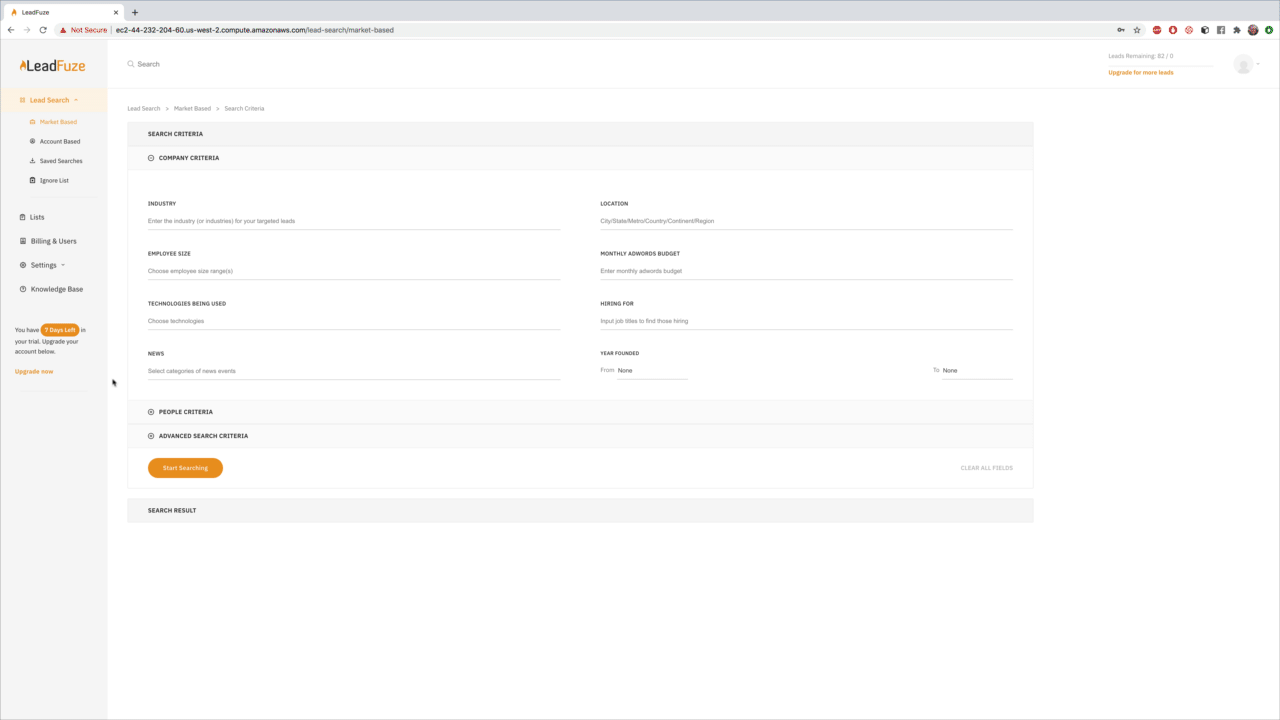What is Smarketing?
Smarketing is the strategy of uniting sales and marketing teams around common goals to ensure cooperation and close alignment of processes. It prevents conflict between the two teams and improves the quality and quantity of leads flowing through the sales pipeline.
That sounds simple enough, but simple definitions often lead to long explanations.

If you picture a pipeline with two sections of pipe. One is marketing and the other is sales. How well you connect and fuse those pipes together, the less likely it is for what is flowing through them to leak when they go from one piece of the pipe to the other.
Leads that have a rough transfer from marketing to sales are more likely to leak (lose interest, get offended, get confused). That transition has many organizations losing money that they may not even know about.
You fix this leakage of leads by fuzing the two departments into one to the best of your ability.

Why is Smarketing important?
The goal of smarketing is largely similar to that of traditional marketing – to drive sales by creating awareness and generating leads, but in a way that aligns with the individual goals of sales and marketing.
Too often there tends to develop enmity between sales and marketing teams. That adversarial relationship affects the quality of the leads flowing through the sales pipeline and hurts sales.
When implemented successfully, smarketing improves communication and goal-sharing between sales and marketing. That strong relationship makes it easy to align processes, helping to scale the sales function and improve the bottom line.
Other benefits of smarketing are:
- A better quality of leads,
- Higher probability of closed sales,
- Shortened buying cycles,
- Improved customer retention rates.
So how can you implement smarketing at your company?
6 Steps to Integrate and Align Sales and Marketing
Depending on the size of the company and the extent to which sales and marketing are misaligned, smarketing can be tough to implement. This 6-step process simplifies the integration and improves outcomes:
1 Agree on a common objective
Establishing shared objectives between the sales and marketing departments will create synergies in how you plan your campaigns. It helps to generate longer-lasting and more profitable campaigns.
Sure, your team may not agree most of the time on the objectives, but it’s important to have a common goal. The more you can agree on the goals of your campaign, the more likely everyone will rally behind them.
Sales and marketing teams must meet regularly to review both their common objectives and overall performance. The heads of the two teams must meet even more regularly so that their teams understand that smarketing starts at the top. Smarketing must become a culture, not just a slogan.
One way of establishing a common objective is to change your language. Instead of calling it the “marketing pipeline” or the “sales funnel,” try calling it the “shared marketing funnel.”
In a shared marketing funnel, you’re still going to have the same steps that are typically found in a traditional sales pipeline. The difference is how they relate to one another and how your team interacts with each other on them.
Everyone will have different responsibilities but, because of the common objective, you use your collective strengths and resources to achieve the common goal.
2 Establish a strong communication framework
A successful relationship can only be reached if you’re able to effectively communicate with one another. When people communicate, they avoid assuming things and address issues head-on and timeously.
When it comes to social media, people often make the mistake of assuming that because we can see what someone is talking about or posting on their timelines, they know all there is to know about them.
But just as in a personal relationship, you need to ask questions and truly listen to the answers in order for it to nurture a successful relationship.
How do the two teams speak about each other? Is the language used positive or adversarial? As the leaders, review and proactively work to diffuse any simmering conflict.
3 Develop an empathetic approach to issues facing one another
If you don’t know what the other person is going through, it can be hard to offer empathy. That goes back to the quality of communication, but also to how well one team is able to view issues from the other’s perspective.
If we’re able to put ourselves in someone else’s shoes and imagine their feelings on a particular topic or situation, then we will have an idea of how they feel and thus make it easier to empathize with them.
As you may already know, sales reps have one of the highest-pressure jobs in the world. No matter how much they try to break away from it, sales reps are still always thinking about their next sale and what will bring them closer to achieving their goals at work.
This is especially true when an inside customer has just walked into a store without making any contact beforehand or even setting up an appointment with one of the reps.
So, it’s important that the sales and marketing teams understand each other’s hardships on the job and work together to create a better customer experience for everyone. Marketing, for example, must constantly seek feedback from sales on the quality of leads they are handing over.
4 Ensure teams stick together when times are tough
Developing a good relationship between sales and marketing is easy, especially when things are going well. But what happens during tough times?
If Sales as a department is struggling to hit targets, for example, it can be tempting for marketing to get frustrated with the lack of interest and walk away. Even worse, marketing may develop an ‘it’s not our problem approach’ and looks the other way.
Where smarketing has been implemented successfully, low sales are a problem for both sales and marketing. Solving the problem will require cooperation between the two teams. It may well be that the reason for declining sales is the poor quality of leads marketing is passing over to sales.
The fact remains that you have a customer in front of you who doesn’t know what they want but still need help fixing their problem. It takes the collaboration of both teams to match this prospect’s needs with your solution.
One way of ensuring sales and marketing stick together when things aren’t going so well is to make meetings mandatory between the two teams, for example, every time you miss a sales target. It is in these meetings where home truths are delivered and where solutions are ultimately discovered.
5 Set common milestones
Sales and marketing should come up with systematic ways of working together. This could be as simple as agreeing on an acronym or phrase that will remind them to focus on the potential customer.
It doesn’t matter what it is, but if you’re both thinking about how to help your customers then you’ll have a chance of finding your way out of any stagnation and finding success again.
A great way of doing this is to collaborate on important project milestones. This is much more achievable than having some arbitrary goal like, ‘every day, we will each make one sales call.’
If the team has a shared understanding of what an important project milestone looks like, they’ll be able to work collaboratively, but in their own way, to achieve it.
6 Establish chemistry between the team leaders
Alignment starts with the leader of each team. As leaders, you want a shared understanding of what your goals are and how you plan to work together.
The more aligned the team leaders, the better their teams will work together. I know some sales leaders may think they’re paired with either an excellent CMO or a terrible one. And the latter may say the same to the former.
What if the two team leaders found out they were both struggling with a similar problem and asked for help? If you work on it together, then maybe your CMO can find an answer. If not, at least he or she knows where to go next.
Solving problems together is the key to being a successful team. After all, what’s more inspiring than watching your teammates succeed?
5 Smarketing Tools – How to Align Sales and Marketing Processes
Without a tool that both your sales and marketing use, either for managing customer relationships and for their own communication, smarketing can be tough to implement. Here are 5 tools that can help:
1 Salesforce
Salesforce is a powerful customer relationship management (CRM) tool that helps to organize your leads and sales opportunities. With this tool, you can help your sales and marketing team to share information about their prospects, build campaigns, and take the necessary next steps.
Among other benefits, salesforce allows you to:
- get a bird’s eye view of your leads and opportunities,
- create campaigns from scratch or with templates to help you stay on top of your marketing strategy,
- schedule meetings, track email activity, and more,
With Salesforce you’ll be able to measure the ROI for all your efforts in one place that is accessible by both sales and marketing teams.
2 LeadFuze
LeadFuze is an intuitive, mobile-friendly CRM that provides sales and marketing teams with insights into their customer base. It helps companies understand the people they’re selling to, so they can sell better and close more deals. It provides data on demographics, psychographics, interests, behaviors, and purchase intent.
Using a suite of tools, LeadFuze makes it easier for marketers and salespeople to do their jobs by providing them with the information they need at just the right time. That way you can stop guessing what your customers want and start giving them exactly what they need.

Some key features of LeadFuze are:
- Easy-to-use interface that allows you a quick and easy view of your data,
- Email alerts for insightful marketing campaigns right in the inbox
- Visualization tools like graphs, reports, heat maps, etc. which give an overview of the stats from your customer base with just one click,
- Customizable dashboard to keep track of your data and campaigns,
- Search field to find the information you need as quickly as possible
Here’s another to consider:
3 Salesloft
Salesloft is an all-in-one sales and marketing software that helps you do your job better. With Salesloft, you can close more deals in less time, thanks to the easy reporting system
The tool has the best lead tracking tools on the market which helps to ensure a better quality of leads and eliminate common lead qualification conflicts between sales and marketing. It offers a cloud-based solution with reliable, easily accessible data.
Furthermore, Salesloft has some great integrations too! It integrates with most CRMs for easy tracking of deals as well as Gmail for easier outreach. The best part is that the tool offers a free trial, so you can try it out risk-free.
Some key benefits of using Salesloft are:
- Easy reporting system,
- Cloud-based solution with reliable data,
- Great integrations,
- Free trial so you can try it before you buy!
If Salesloft’s capabilities fall short of what you are looking for, here’s another try risk-free:
4 Dynamics 365 Sales
Designed by Microsoft to work with their productivity suite, Dynamics 365 Sales’s popularity has grown rapidly over the past few years. It offers a variety of tools and services for marketers at different levels: from entry-level marketing managers to seasoned professionals.
Just as Salesloft, this CRM has a free trial. Some of its standout perks are:
- Easy reporting system, with data stored in the cloud so it’s always accessible. Data is immediately updated after any changes are made to your account.
- Unlimited reports for productive smarketing teams,
- Integrates with 15+ popular CRMs out of the box.
- An advanced email marketing solution that’s spam-free by default, with the ability to split test subject lines for maximum open rates and set up drip campaigns to follow your own lead nurturing process!
- Customer support is available 24/365.
Last but not least:
5 Keap
Keap is a smart marketing platform that offers unlimited data storage with its cloud service. As a signing-up perk, you also get an advanced email campaign for free!
Your sales and marketing teams can use Keap to stay on top of leads and customer contact information. Some its key benefits are:
- Generates new leads to feed your sales pipeline,
- Connects with contacts across all your channels (i.e. email, social media)
- Helps grow and nurture relationships for maximized ROI
- Builds customer loyalty through personalized services that suit their unique needs.
Unite Your Sales and Marketing Teams Around One Goal with Smarketing
If left unchecked conflicts and disagreements that have grown to be accepted as normal can become a distraction that cost the company sales and revenue.
Smarketing is an effective way of aligning sales and marketing’s oft-conflicting goals. It forces them to communicate better and unite around a common objective. Successful implementation takes the buy-in of everyone from the leaders to the lowest-ranking people in the two teams.
Now that you understand what smarketing is, why it’s important, the steps to implement it, and the tools to use, is it something your organization can benefit from?
Want to help contribute to future articles? Have data-backed and tactical advice to share? I’d love to hear from you!
We have over 60,000 monthly readers that would love to see it! Contact us and let's discuss your ideas!

